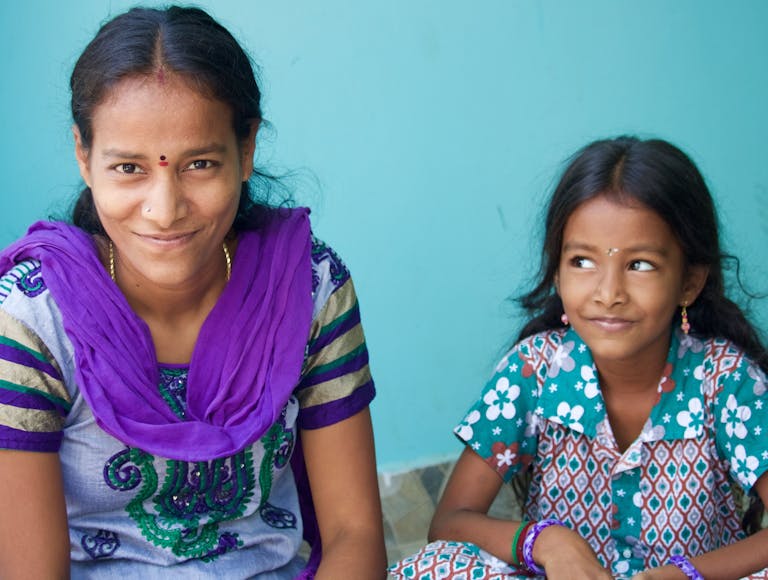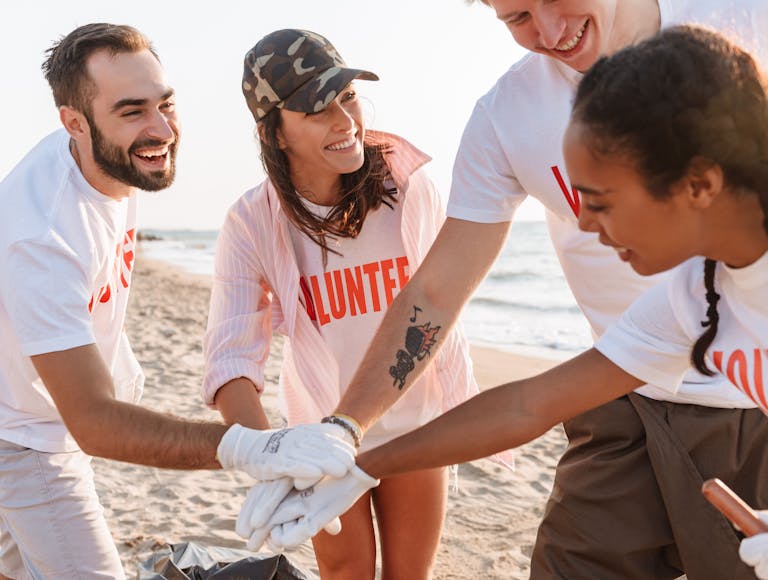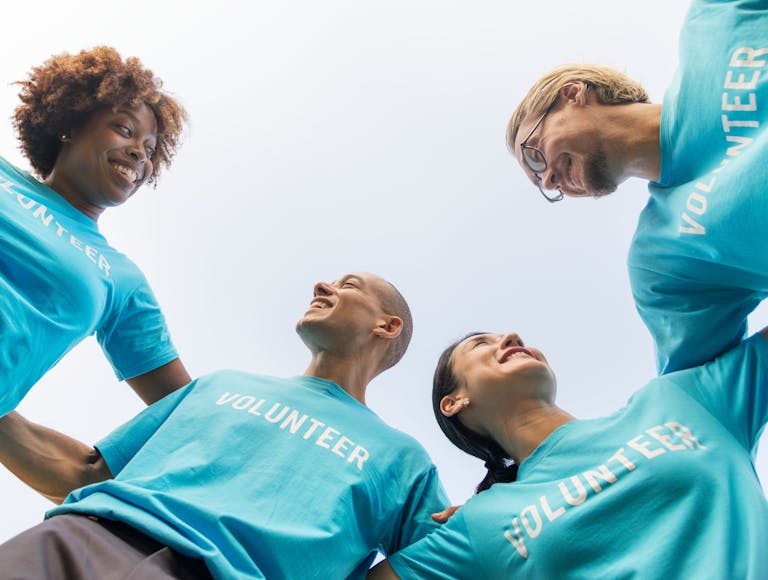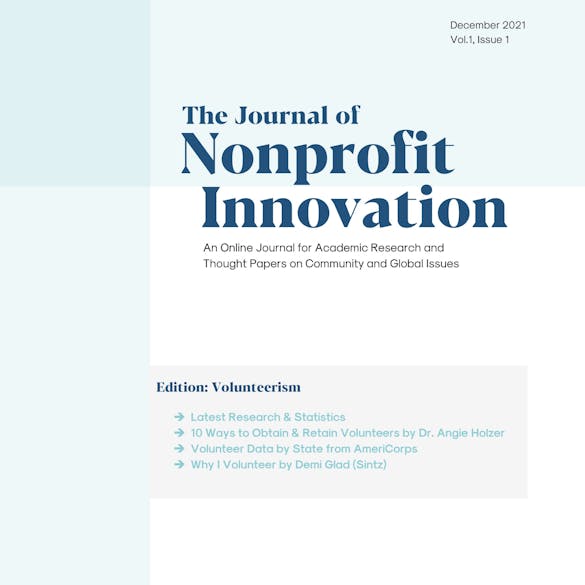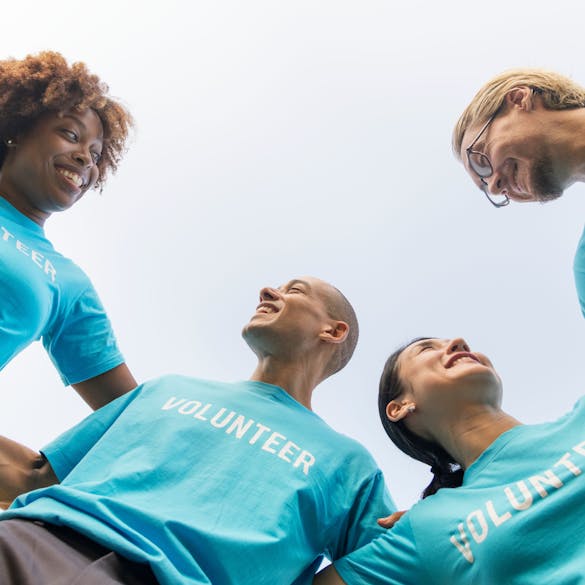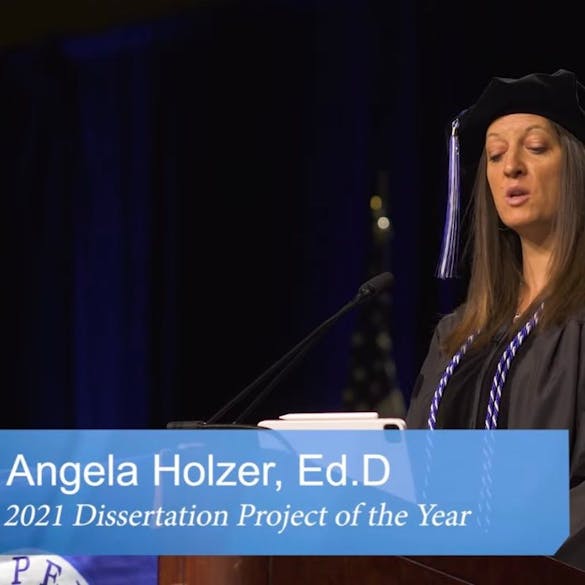Latest News
Blog
Jan 1, 2022
All Validated Nonprofits have the ability to send referrals to other nonprofits giving a $10 OFF Discount to both the new nonprofit and the referring nonprofit. These funds can be used to help fund projects in 2022.
Dec 27, 2021
Did you know, 80% of nonprofits in America rely on volunteers for operation. See data by state, the latest research on volunteer retention, and more.
Dec 1, 2021
Journal for Nonprofit Innovation:
Dec 2021
Article 1
-
Article: 10 Keys to Obtain and Retain Volunteers for Nonprofit Work
By Angela Holzer, EdD, CEO/Founder of WikiCharities

Introduction
As nonprofits continue to struggle with raising funds, especially during this pandemic, it is important to better understand how to attract and maintain volunteers to help with a variety of services in a nonprofit organization. The following 10 ideas have helped me over the past twenty years of working in the nonprofit sector to maintain a steady stream of volunteers in my nonprofit work.
Read More --> Article.10KeysonVolunteerism.Dec2021.pdf
-
By Angela Holzer, EdD, CEO/Founder of WikiCharities

Every year, the majority of nonprofits are run and sustained by volunteers around the United States (McKeever, 2016). There is a great need to better understand how to obtain and then retain these volunteers in helping move your cause forward as a nonprofit. This article will address 10 ways to approach volunteerism as you find volunteers, and then work to actively retain them in your efforts.
(About the Author: Dr. Angie Holzer received her doctorate in learning and leadership, where she specialized in organizational leadership with an emphasis in nonprofit management. She received the Dissertation of the Year Award in 2021 for her research in human trafficking and nonprofit collaboration. She has spent the last twenty years working in the nonprofit sector. She founded WikiCharities, a new online platform to help improve collaboration in the nonprofit sector and improve trust through a nonprofit validation. All US based nonprofits can now claim their FREE webpage.)
Introduction
As nonprofits continue to struggle with raising funds, especially during this pandemic, it is important to better understand how to attract and maintain volunteers to help with a variety of services in a nonprofit organization. The following 10 ideas have helped me over the past twenty years of working in the nonprofit sector to maintain a steady stream of volunteers in my nonprofit work.
1- Present Opportunity and Invite
Tell people about what you are working on and invite them to help if they are interested. Offering them an opportunity to get involved opens the door to someone thinking about giving their time, skills, and expertise to your cause. You want volunteers who have a desire to help without a lot of asking or persuading. I have found that rarely do people ask to help without me (or someone on my team) extending the invitation.
2- Find Out Interests
Often times finding out a person’s interest and what causes they feel passionate about is key to getting them to volunteer. What are their skills? What specifically interests them about your cause? Once you know them a little better, give them different options in how they can help. I have found that people stay longer when volunteer opportunities align with their passions or interests.3- Be a Good Storyteller
Nonprofit leaders need to be engaging and enthusiastic about their mission. Effective leadership styles for nonprofit leaders often fall under one of the four areas: transformational leadership, servant leadership, charismatic leadership, and transactional leadership. In all of these styles, a nonprofit leader needs to be able to motivate people to get involved and help someone understand the importance of how their service will make a difference. Make sure you tell them about ways they can help and/or ways other people have helped that have made a big impact.4- Don’t Require a Large Time Commitment
Many people who volunteer are already actively involved with other things. It’s important to present opportunities that are not overwhelming with large time commitments. People are hesitant to commit if they think they will let you down, so give them a chance to volunteer once and then they can see how they feel about future service. You can also present a small task where they can get their feet wet and feel like they are making a difference, even in a small way.5- Show Appreciation
Having the ability to show your appreciation for the time people are giving to volunteer is an important part of retaining volunteers. Be a friend. Be reachable. Be approachable. Nobody likes to support causes that are led by unfriendly and/or unappreciative leaders. You can show appreciation through words, small gifts and even listing their name on your website as someone who supported the efforts can go along way.6- Ask for Opinions and Input
You always need to remember that the best ideas don’t always come from you. People like to feel needed as they contribute not only their time, but their ideas and thoughts on improving what you are doing. When you make a decision, get a second or third opinion from those who are helping you. Then have a discussion. This opens the door to someone feeling comfortable about approaching you in the future with ideas they may have, and thus helps volunteers feel more engaged in your organization.7- Give Them a Task
When someone commits to helping, do not wait too long before giving them a task or chance to help. Helping a volunteer feel they are needed means letting them know you have things they can help with sooner rather than later. Make it easy for someone to jump into a task by giving them clear expectations and ideas on how to complete a task.8- Give Autonomy in Completing Tasks
When you assign a task, give the volunteer flexibility in how and when they want to accomplish that task if possible. However, some volunteers need to be present at a certain time (helping serve food to the homeless). In this case, there needs to be a clear and set time for volunteers to be present. However, many times tasks could include helping out with financial spreadsheets, maintaining social media platforms, etc. You need to help the volunteer feel motivated with consistently checking in with them on the progress, but allowing them to complete tasks on their own time as long as they meet the needed timeline you established.9- Be Flexible with Deadlines
When you assign a task, give them a timeline of when that task needs to be completed. However, when a volunteer isn’t able to complete the task on time, you need to be flexible in extending deadlines if possible. Help people feel that they are not a huge burden when deadlines aren’t met right on time. Even if it’s inconvenient, you need to decide whether you lose a volunteer because of your deadline and making them feel bad or adjusting your timeline so you can maintain an extra set of helping hands.10- Help Volunteers Feel Important – Because They Are!
You can help volunteers feel important through a number of ways. It’s important to get to know your volunteers and find out what motivates them. This could be a genuine ‘Thank You’ or even acknowledging their efforts in front of others, which shows you are mindful of their service and willing to praise their efforts.Conclusion
Volunteers are an important part of most nonprofit organizations. They often help with fundraising, marketing, business development, strategy, and projects. Finding and keeping volunteers can be a great way to keep your costs down and reduce funds spent on salaries. What tips have you found helpful in working with volunteers in your nonprofit organization? We would love to hear from you at info@wikicharities.org.
Please let us know if you are interested in contributing articles to our journal in the future. We are looking for scholastic articles and thought papers. Thoughts papers need to be from nonprofit leaders who have firsthand experience on their topic. All submissions should be sent to info@wikicharities.org with the subject line: Journal Submission.
References
McKeever, B. (2016). Nonprofit Almanac 9th edition. Rowman & Littlefield.
Nov 29, 2021
Announcing a New Publication in 2022!
-
New Nonprofit Journal: THE JOURNAL FOR NONPROFIT INNOVATION
WikiCharities is proudly announcing the publication of a new online journal focused on discussing innovative ways to address community and global social issues. We welcome articles and scholastic thought papers on ways to improve the nonprofit sector and issues the nonprofit sector works on solving.
Submission Welcome! Article and Thought Paper submissions are open until January 15, 2022. Requirements need to be within 2-4 pages, not counting references. Submissions can be emailed to angie@wikicharities.org along with any questions.
Submissions Due by Jan 15, 2022
Journal for Nonprofit Innovation
Nov 15, 2021
Launch of WikiCharities Validation
-
Launch of WikiCharities Validation
WikiCharities launched the ability for nonprofits to activate their premium subscription, allowing nonprofits to be fully transparent leading to a nonprofit validation. The validation process is an EASY 3 STEP PROCESS.
- Step 1 - CLAIM - Your Nonprofit Page
- Step 2 - SUBSCRIBE - to our Premium Subscription
- Step 3 - VALIDATE - Submit your Validation Application
Oct 2021
Dissertation of the Year Award
-
Dissertation of the Year Speech
Dr. Angie Holzer gave this year's commencement speech as she accepted the award for the dissertation of the year in 2021. The focus of her dissertation was the challenges that nonprofit's face as they work to collaborate in fighting human trafficking.

-
Full Text of Commencement Speech
Dr. Angie Holzer - Aspen University Commencement Speech
What is your educational journey?
My educational journey includes both traditional academic classroom learning and practical, on-the-ground learning.
1- Traditional Academic Experiences:
- My traditional academic learning started with my undergraduate degree in psychology, when I remember sitting in a classroom of 300 students and wondering if I made a difference.
- After I graduated, I got a job working at the Boys and Girls Club, where I learned about gangs, child abuse, and the importance of prevention programs. And I knew I needed more education to make a larger impact.
- After a few years I then pursued my master's degree in Educational Counseling. One of my professors there went out of her way to encourage me to take a summer trip to Africa to gain more practical experience about what I was wanting to learn. So off I went. And it ended up changing my life’s trajectory.
2- Practical, On-the-ground Learning:
- I soon found myself in Uganda, sitting on a cold floor of an orphanage, holding a little girl for hours who was burning up with a fever. Nobody worried about her. They didn’t have time. And I knew in that moment I mattered for that child.
- A week later I spent an entire day rocking a baby who had HIV, and who sadly died the next day. And even though it’s hard to explain the impact I made to funders that day in metrics, I knew that I mattered to that child and that’s exactly where I needed to be in that moment.
- Soon after that I found myself sitting in a small make-shift hut, in the middle of Kenya, wondering how I could make a larger impact and difference as I saw all the suffering around me.
Once I returned to the US, I moved to the Bay Area, where I took a job in the San Francisco School District as a School Counselor where I learned more about homelessness, poverty, hunger, suicide prevention, and the importance of working with the police to see better outcomes for these high school kids.
I soon realized that I wanted a more global experience. So I started a nonprofit and began running and participating in medical and humanitarian expeditions to Africa, India, Dominican Republic and Central America.
Throughout these experiences I continued to ask myself.
How can I make a difference?
And so I ask you: How can you make a difference in the communities you live in?
A few years ago, I realized that in order to make a larger impact, I needed to do research and obtain my doctorate degree.
How has Aspen University and our mission helped you achieve your academic and professional goals?
I searched for a university that would give me flexibility in learning and a place where I would get the support with what I wanted to accomplish. I looked at in-person universities but found it wasn’t a fit to allow me to pursue my work and learn what I needed to progress my desire to make a difference in the world. Looking back, Aspen University and the professors I had, were the perfect fit for me. I found my experience there to be encouraging and supportive in my goals.
My Interests and Research
Throughout my classes, I was drawn to articles and stories about the nonprofit sector. What leadership style works best with nonprofits, and how best to motivate individuals to get involved in the community and global issues.
Then I started being drawn to articles about human trafficking. The challenges that exist and the realities of 40 million people in this world who are enslaved in modern day slavery. As I learned more, I became more firmly rooted in being part of the solution to help in the cause to stop human trafficking.
My Research study:
The focus of my research study was to better understand the challenges that nonprofits face as they work together with other nonprofits, law enforcement and the community to fight human trafficking. As I did my research, this time I didn’t wonder if I could make a difference, I knew I could. In my discussions with my professors and as I better understood the challenges that nonprofits face through my research, AND having seen these challenges in the last 20 years of working in the nonprofit sector, I have been able to develop a tool to help. A nonprofit called WikiCharities.
WikiCharities.org
WikiCharities is creating an online community for the nonprofit sector, where we’ve developed a nonprofit validation to improve transparency and connect nonprofits with funders, volunteers, other nonprofits, and even those who need their services(like victims and survivors of human trafficking). Similar to what Linked did for the professional space, WikiCharities is bringing the nonprofit sector together on a global scale.
In my research, I discovered that there are 3 reasons why victims of human trafficking don’t get help.
- Afraid of Trafficker (or trauma-bond with)
- Don’t trust authorities
- Don’t know what services are in their community to help them. - WikiCharities is working to solve #3.
We recently uploaded 1.7 million US based nonprofits on our platform where you can search for them, and their services, on our map by topic and location. We also just launched our nonprofit validation where nonprofits can now claim their own profile page and become validated. We hope all foundations, funders, and companies will require our validation prior to giving - to improve how funds are used and making services more accessible to those who need them.
I invite you to check it out, and become aware of the nonprofits in your community that you can support. Maybe these causes match up to how you want to make a difference in your community!
As I went through my journey in my research and developing WikiCharities, I found myself continually asking:
- How can I make a difference in this area?
- What research can I do that will help make a small dent in this field?
I’ve been asked to share words of wisdom for my fellow graduates. To end, I would offer up 3 things that have helped me and hopefully YOU find helpful, as you discover the questions you need to ask in your journey.
What words of wisdom do you have for your fellow graduates?
1- Know Yourself: Develop“Self Awareness”
- Creating the time and space to know who you are.
- Do you know what you like and what you don’t like?
- What do you feel passionate about? What do you care about?
- “I have a dream.. “ said Dr. King.
- What is your dream? Once you know, make sure you write it down.
2- Make a Plan:
Take the time to think about why you feel passionate about something and what you can do to be part of making a difference. And then get to work.
3- Find People Who Believe in You:
I think this is key to success. Do you have people around you who are supportive and believe in what you’re doing? If you don’t, go where you are appreciated.
Conclusion
I want to thank the professors and individuals at Aspen University who created an environment for me to accomplish what I needed to meet my goals in making a difference. I’ll end with one of my favorite quotes by Mother Theresa.
"May today there be peace within.
May you trust that you are exactly where you are meant to be.
May you not forget the infinite possibilities that are born of faith in yourself and others.
May you use the gifts that you have received, and pass on the love that has been given to you.
May you be content with yourself just the way you are.
Let this knowledge settle into your bones, and allow your soul the FREEDOM to sing, dance, praise and love.
It is there for each and every one of us."
~Mother Theresa♥
Thank you!
August 2021
Journal Publication
-
Journal Publication: Fighting Human Trafficking and Nonprofit Collaboration
We want to highlight an article entitled, "Fighting Human Trafficking by Better Understanding Nonprofit Collaboration", in the Aspen Journal of Scholarly Works (August 2021, Vol1).

-
Abstract
This research study examines nonprofit organizations and how collaboration plays a part in the human trafficking efforts within the United States. A descriptive study was conducted analyzing data from a quantitative, survey-based research method. Using a sample of 29 nonprofit leaders working in fighting human trafficking, data was collected on 1) what challenges nonprofits face in collaborating, 2) what technology tools nonprofits use to collaborate, and 3) how many other groups a single nonprofit works with in combating human trafficking. The findings show that the main challenges are 1) limited time, and 2) competition and/or lack of trust.
Introduction
The following research study was undertaken to better understand the challenges nonprofit organizations face as they combat human trafficking within the United States.
Research Questions
The following research question guided this study (RQ1): What are the similarities and differences in how nonprofit organizations in the San Francisco Bay Area, California and the Salt Lake Area, Utah collaborate in fighting human trafficking with other nonprofits and groups in their communities? There were also sub-research questions that continued to expand on the initial research question to better understand the workings of the collaboration that currently exists within these two areas of the United States.
RQ1a: What are the challenges nonprofit organizations face as they make an effort to collaborate with other nonprofit organizations?
RQ1b: What are the challenges nonprofit organizations face as they make an effort to collaborate with public or private sector groups?
RQ1c: What technology do nonprofits currently use in collaboration?
RQ1d: What other nonprofits and secondary groups are these nonprofit organizations collaborating with to help fight human trafficking (homelessness, foster care, addiction recover centers, law enforcement, corporations, etc.)?
RQ1e: What similarities exist between the two communities with collaboration?
RQ1f: What differences exist between the two communities with collaboration?
This study first established what was happening within one community, and then a comparison was made between the two communities. In making this comparison, there was a hope to see similar trends or different approaches that other communities can think about using in their own communities to fight human trafficking.
Literature Review
There were three areas that this literature review targeted to frame this study, 1) human trafficking, 2) nonprofit sector, and 3) collaboration.
Human Trafficking
In 2000, the United States passed the first federal law to address trafficking in persons called TVPA, the Trafficking Victims Protection Act (Vanek, 2019), and a 3P strategy (prevention, prosecution, protection) was developed (U.S. Department of State, 2019). In 2009, an additional P for partnership was added (Foot, 2016). However, collaborative partnerships between state agencies and voluntary nonprofits are minimal (JHA, 2018). There are limited studies on human trafficking (Chen & Lu, 2017), and data are sparse on human trafficking crimes (United Nations Office of Drugs and Crime, 2018). This is due to human trafficking being a hidden population, where no sampling frame exists and there is unknown data with the size and boundaries of this population (Chen & Lu, 2017). A study in 2013 showed the greatest need for victims is housing (Baker & Grover, 2013).
Nonprofit Sector
The majority of nonprofits within the United States are small, making under a million a year (McKeever, 2016). These small nonprofits are overlooked, while larger nonprofits have more decision-making power (Proulx, Hager & Klein, 2014). Most agencies within a community responding to victims were not aware of each other and found out about each other through word of mouth (Baker & Grover, 2013). There is a gap in documentation how nonprofits collaborate within communities (Elrod, 2015).
Collaboration
Scholars do not agree on one definition of collaboration (Felix, 2011). There are different words that can be used to describe collaboration, such as partnerships, alliances, agreements, coalitions, and nonprofit business alliances (Rathi, Given & Forcier, 2014). Collaboration could also include sharing of resources and information (Wei-Ning & Change, 2018). Collaboration is defined in this study as “a method that can be used either formally or informally by a group of individuals who can work side by side to share concerns that can bring mutual gain" (Felix, 2011, p.14). Technology is becoming more involved with the collaboration process (Raghupathi, 2016), and is often a low-cost tool to help in sharing information and learning new things (Rathi, Given & Forcier, 2014).
Benefits.
The benefits for nonprofits to collaborate include new opportunities, new information and new social capital (Park, 2006). When collaboration increases, there can be an increase of effectiveness in outcomes (Abdulkadir, Suhariadi, Wibowo, & Hadi, 2017). Greater connections are built within a community when collaboration increases (Powell, Winfield, Schatteman, & Trusty, 2018). Collaboration also brings access to more funds and resources (Chang, Seetoo, Yu, & Cheng, 2016). Sharing of resources could involve pooling or sharing finances, skills, expertise, staffing and knowledge for a collaborative purpose (Rathi, Given, & Forcier, 2014).
Challenges.
Nonprofits experience challenges when they collaborate within their own nonprofit sector and with the public and private sectors (JHA, 2018; Chang, Seetoo, Yu, & Cheng, 2016). These challenges include having limited time and limited resources to collaborate. Nonprofits often feel a sense of competition and lack of trust with those they collaborate with. Small nonprofits face being dissolved or losing autonomy (Proulx, Hager & Klein, 2014).
Methodology
The methodology and design of this study was a quantitative, descriptive research design that used a survey-based approach to gather the data. The sample population that was used in this research study were nonprofit organizations based in two locations within the United States. The first location was the San Francisco Bay Area in California focusing specifically on four counties: San Francisco, San Mateo, Santa Clara, and Alameda. The second location was the Salt Lake Area in Utah focusing specifically on four counties: Weber, Davis, Salt Lake, and Utah. A criteria sampling approach was used to find nonprofits who worked in the focus area of human trafficking or any related topic in three different categories; prevention, working with current victims, and aftercare services. There were 64 related NTEE codes out of the 400 codes from the IRS database that fit in the related focus areas. Out of the 36,638 nonprofits in these 8 designated counties (Table 1), only 2,015 fit in the focus areas. Another 40% were removed due to the inability to find contact information or these nonprofits no longer being in operation, leaving a total of 915 nonprofits.
Table 1
Nonprofit Sampling and Filtering Process
States
Total # of Nonprofits in Database
% Relevant After Applying NTEE Codes
Criteria Sample
Removal of Inactive Nonprofits or No Online Presence
Final Count: Related Fields Only
UT
7,720
7%
511
361 (Removed 29%)
255
CA
28,918
5%
1,504
848 (Removed 44%)
696
CA + UT
36,638
5%
2,015
1,209 (Removed 40%)
951
The data were collected through SurveyMonkey, an online data collection tool. The variables in this study were categorical variables, allowing for different types, kinds, and elements of collaboration to be analyzed. There are five categorical variables in this study, 1) nonprofit organizations working in fighting human trafficking, 2) Location (San Francisco Bay Area, CA and Salt Lake Area, UT), 3) number of nonprofits and other groups working with (or collaborating with) a single nonprofit in fighting human trafficking in their community, 4) different technology or tools to collaborate that are being used, and 5) frequency of collaboration that is happening. Calculations were used to see the mean, median, and mode as well as chi-square test to see if there is a strong relationship between categorical variables.
Results
There were 29 nonprofits who participated in the survey, 22 from California and seven from Utah. The California nonprofits have an even percentage of nonprofits and services in fighting human trafficking (see Figure 1), whereas Utah nonprofits lack in the areas of prevention and awareness (see Figure 2).
Size of Nonprofit vs Category
In California, the smaller nonprofits take on 67% of the efforts in prevention and awareness, 67% of the efforts in working with current victims, and providing 60% of the aftercare services. The large nonprofits in Utah take on most of the effort in all three categories.
Challenges
In California, 60% of the nonprofits stated that limited time was their number one reason they struggle to collaborate with other nonprofits (see Figure 9). In Utah, 50% of the nonprofits indicated that limited time and competition/lack of trust with other nonprofits were the top reasons (see Figure 9). In California, most nonprofits felt they have different goals in working with other groups, while Utah shows there are few groups to work with in the same space (see Figure 10).
Technology
In California, 75% of participants stated email was the top tool they used to collaborate with other nonprofits (see Figure 11). In Utah, 80% were most likely to use the phone when collaborating with other nonprofits (see Figure 12).
Collaborating Groups
Out of the 57% of the smaller nonprofits in California, the organizations that earn less than $50,000/year take on the majority of the collaboration (see Figure 13). Both communities collaborated mostly with community groups, and the least amount with large corporations (see Figure 14).
Similarities and Differences
The similarities exist in the challenges both communities face as they collaborate. The differences exist in the tools they use to collaborate and limited number of nonprofits working in Utah to fight human trafficking.
Variables
Both in California and Utah, most nonprofits collaborate weekly with other nonprofits and monthly with collaborative network (see Figure 15, Figure 16). The average number of other nonprofit organizations a single nonprofit collaborates with in California is 14.8 (see Table 3). There was no significant relationship found between variables.
Conclusion
As nonprofits face challenges of having limited time in collaborating with other nonprofits, improving the use of technology tools needs to be addressed to improve efficiency (Proulx, Hager & Klein, 2014). Nonprofits also face feelings of competition and lack of trust in collaborating with other nonprofits. Future research can be pursued in addressing why competition and lack of trust is present in collaboration and how to engage small nonprofits, specifically in Utah.
As communities combat human trafficking, county and statewide coalitions are formed. In California, the San Mateo County coalition services the people in their county and has an open group approach. All meetings are public, and all community members are encouraged to get involved. Utah (UTIP) has a task force to service all people in the state and has a closed group approach. Participants are approved by application and community members are not encouraged to participate without meeting the requirements established by the governing body. Further research could be done on the benefits and struggles of different collaborative models with human trafficking task forces and coalitions, and what is the best approach to meet the needs of victims and survivors of human trafficking. This effort is “people-based”, says Sergeant Juan Reveles, who runs the Orange County Human Trafficking Task Force, one of the leading task forces in the nation (J.Reveles, personal interview, March 12, 2021). He states that it is important to learn to work together to help those victims and survivors of human trafficking.
References
Abdulkadir, W., Suhariadi, F., Wibowo, A., & Hadi, C. (2017). Three-party (physician-pharmacist-director) collaboration model on teamwork effectiveness improvement in hospital. Open Access Journal of Science and Technology, 5 doi:http://dx.doi.org/10.11131/2017/101156
Baker, D. A., & Grover, E. A. (2013). Responding to victims of human trafficking: Interagency awareness, housing services, and spiritual care. Social Work and Christianity, 40(3), 308-321. Retrieved from https://search.proquest.com/docview/1491961558?accountid=34574
Chang, J., Seetoo, D., Yu, C., & Cheng, C. (2016). Relational management mechanisms for strategic alliances among nonprofit organizations. Voluntas, 27(5), 2458-2489. doi:http://dx.doi.org/10.1007/s11266-015-9557-3
Chen, S., & Lu, X. (2017). An immunization strategy for hidden populations. Scientific Reports (Nature Publisher Group), 7, 1-10. doi:http://dx.doi.org/10.1038/s41598-017-03379-4
Elrod, J. (2015). Filling the gap: Refining sex trafficking legislation to address the problem of pimping. Vanderbilt Law Review, 68(3), 961-996. Retrieved from https://search.proquest.com/docview/1683498344?accountid=34574
Felix, R. (2011). Faith-based partnerships between the government and churches (Order No. 3440049). Available from ProQuest Central. (853329838). Retrieved from https://search.proquest.com/docview/853329838?accountid=34574
Foot, K. A. (2016). Collaborating against human trafficking: cross-sector challenges and practices. Lanham: Rowman & Littlefield.
JHA, A. (2018). The law on trafficking in persons: The quest for an effective model. Asian Journal of International Law, 8(1), 225-257. doi:http://dx.doi.org/10.1017/S2044251316000266
McKeever, B. (2016). Nonprofit Almanac 9th edition. Rowman & Littlefield.
Park, C. (2006). Collaboration among human service nonprofit organizations: Mapping formal and informal networks of exchange (Order No. 3224024). Available from ProQuest Central. (305254609). Retrieved from https://search.proquest.com/docview/305254609?accountid=34574
Powell, E., Winfield, G., Schatteman, A. M., & Trusty, K. (2018). Collaboration between practitioners and academics: Defining the pracademic experience. The Journal of Nonprofit Education and Leadership, 8(1) Retrieved from https://search.proquest.com/docview/2027725716?accountid=34574
Proulx, K. E., Hager, M. A., & Klein, K. C. (2014). Models of collaboration between nonprofit organizations. International Journal of Productivity and Performance Management, 63(6), 746-765. doi:http://dx.doi.org/10.1108/IJPPM-06-2013-0121
Raghupathi, V. (2016). Changes in virtual team collaboration with modern collaboration tools. I-Manager's Journal on Information Technology, 5(2), 5-13. Retrieved from https://search.proquest.com/docview/1809060987?accountid=34574
Rathi, D., Given, L. M., & Forcier, E. (2014). Interorganisational partnerships and knowledge sharing: The perspective of non-profit organisations (NPOs). Journal of Knowledge Management, 18(5), 867-885. doi:http://dx.doi.org/10.1108/JKM-06-2014-0256
Reveles, J. (2021). Personal communication through a phone call. Sergeant Juan Reveles leads the Orange County Human Trafficking Task Force.
United Nations Office of Drugs and Crime. (2018). Retrieved from https://www.unodc.org/documents/data-and-analysis/glotip/2018/GLOTiP_2018_BOOK_web_small.pdf
U.S. Department of State. (2019). Retrieved from https://www.state.gov/wp-content/uploads/2019/06/2019-Trafficking-in-Persons-Report.pdf
Vanek, J. (2019). The essential abolitionist: what you need to know about human trafficking & modern slavery. United States: Daliwal Press.
Wei-Ning, W., & Chang, S. (2018). Collaboration mechanisms of taiwan nonprofit organizations in disaster relief efforts: Drawing lessons from the wenchuan earthquake and typhoon morakot. Sustainability, 10(11) doi:http://dx.doi.org/10.3390/su10114328
June 2021
FREE Webpages for Nonprofits
-
Nonprofits Can Claim their FREE Webpage on WikiCharities.org!
WikiCharities just launched the ability for 1.7 million US based nonprofits to claim their FREE webpage. This allows nonprofits to update their contact information, list the topics they work in (making their nonprofit searchable on our visual map), and upload, store and share their 501c3 document from the IRS. Nonprofits have their own personalized URL link where they can share their webpage with donors, volunteers and anyone interested in finding out more about their nonprofit and bringing more awareness to their cause.

April 2021
Spring Colloquium Presentation
-
SPRING 2021 COLLOQUIUM PRESENTATION
Dr. Angie Holzer presented on her research at this year's Spring Colloquium sponsored by United States University and Aspen University.



